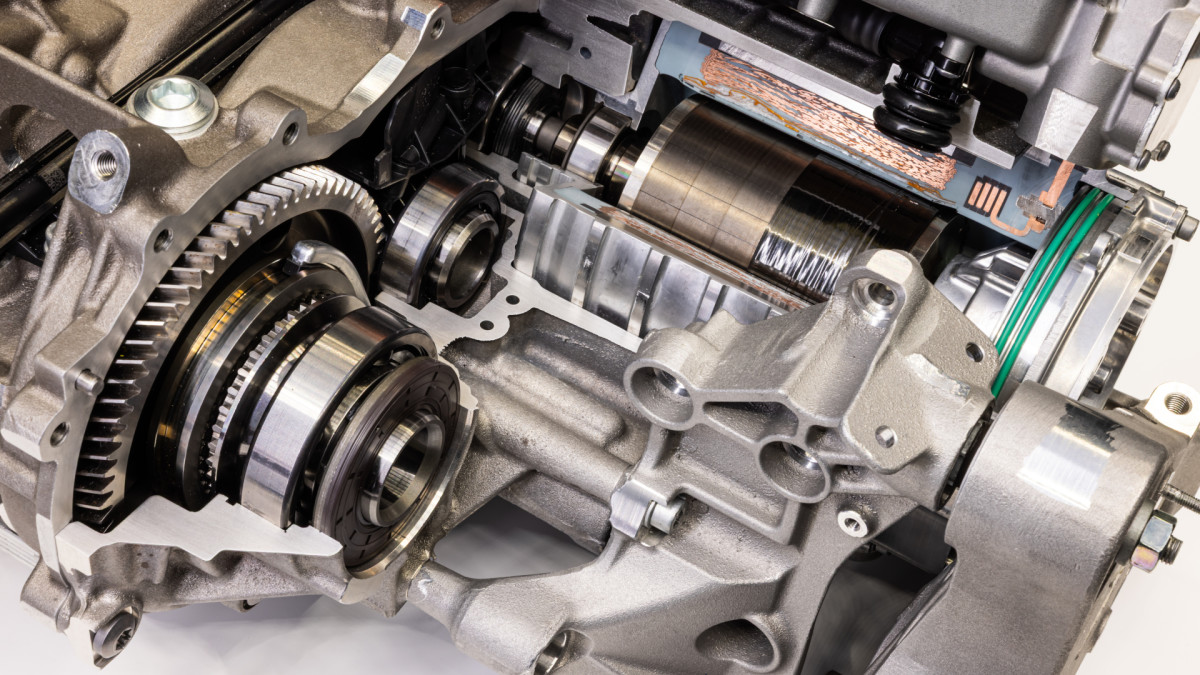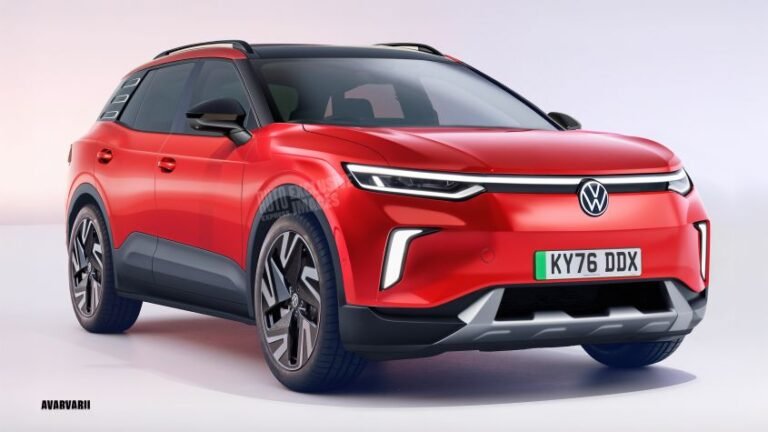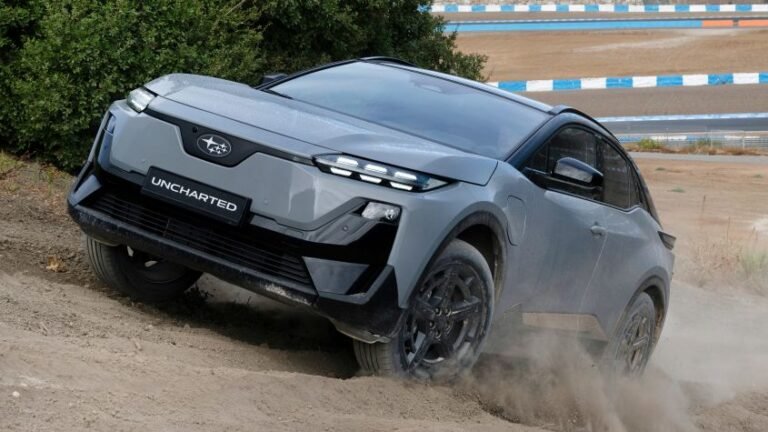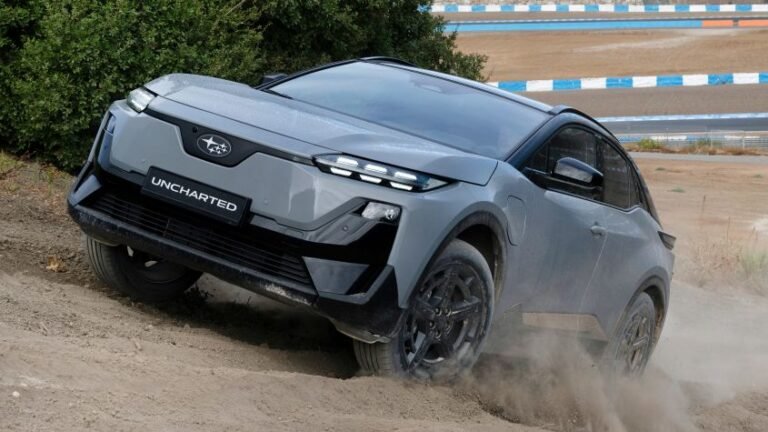
- Ferrari has revealed the first official pictures and details of the Elettrica’s powertrain and chassis.
- 0-62 mph is claimed at 2.5 seconds with a top speed of 192 mph.
- The Elettrica will be roughly 200 pounds heavier than the Purosangue, but also shorter.
The time has finally come for Ferrari to begin dishing the dirt on its first-ever all-electric vehicle, and while the purists may be pessimistic, those with an affinity for engineering and ingenuity will doubtless be impressed by what Maranello is promising. Ferrari has not revealed the body style of this EV, called the Elettrica, but the wheelbase measurement of 116.5 inches is 2.3 inches shorter than that of the Purosangue FUV, implying that the Elettrica will be a four-seater, possibly similar to the GTC4Lusso that preceded the aforementioned Ferrari Utility Vehicle. Impressively, and despite the heft of a battery pack, Ferrari also claims a curb weight of just 5,070 pounds, or only around 170 lbs more than the Purosangue. These things bode well for body control, range, and acceleration, but they’re not the only highlights of the new package. Ferrari says over 60 patented technological innovations are found in this EV, so let’s take a look at some of them.
Four Motors, Four-Figure Horsepower
Maranello has developed its own permanent magnet synchronous motors with Hallbach array rotors, using know-how from the world of F1 and building on the tech already applied to the front axle of the Ferrari F80. The front pair of motors produces a combined 282 hp while the rear pair generates a combined 831 hp. That means north of 1,000 hp in total, though an exact combined figure is yet to be disclosed. As GMC does with the Hummer EV, Ferrari is also quoting its torque figure as a multiplied figure at the wheels, with an absurd 2,582 lb-ft on the front axle and an almost inconceivable 5,900 lb-ft at the rear. The result? Ferrari claims 0-62 mph in 2.5 seconds and a top speed of 192 mph.
SH Proshots/Autoblog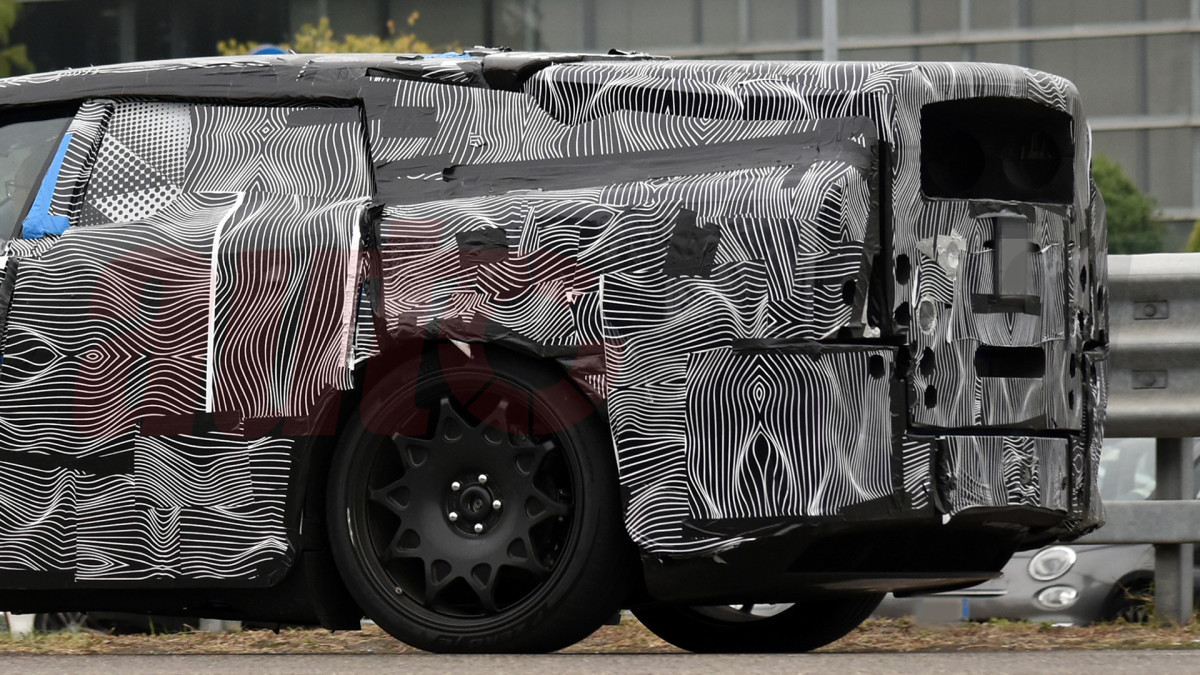
Obviously, drivers won’t need all that grunt all the time, so the front axle can be disconnected. Normally, sending power between front and rear axles would require loads of cabling, but Ferrari has designed clever new connectors that it says reduce weight without any penalty in response. As for the battery, it has a capacity of 122 kWh, enough for a range of around 329 miles, and when empty, 800-volt technology allows charging at up to 350 kW. Remarkably, Ferrari claims the highest energy density of any production EV on the planet (195 Wh/kg) – beating even the Rimac Nevera (170 Wh/kg). This battery sits in the floor between the two axles, with some cells under the rear seats to keep the wheelbase short, and acts as a structural component that enhances body rigidity. Moreover, it enables a center of gravity some 80 millimeters lower than a “comparable” ICE vehicle, which doubtless refers to the Purosangue. A final highlight is that this battery is designed to be removable and repairable without messing around with the rest of the structure, and that bodes well for future technology upgrades. If the McLaren P1 can get a new, more potent battery years after launch, perhaps Ferrari’s Elettrica will have the same capability.
Clever Suspension And An Authentic Noise
Like the F80 and Purosangue, the Elettrica has a 48V active suspension system (developed by Multimatic) that allows individual control of each wheel. Combined with four-wheel steering and torque vectoring on each axle, this should be an astonishingly agile EV, and Ferrari says the car should feel far lighter than it really is. Yes, Ferrari’s first EV might be a better car to drive than a V12-powered Purosangue. To help achieve that goal, the right “shift” paddle will allow the driver to progressively control power and torque through five levels, while the left one will mimic engine braking with similarly progressive stages of regeneration. Another remarkable highlight is that Ferrari has developed its first elasticized mechanical subframe, which promises to minimize noise, vibration, and harshness without compromising on the level of stiffness you’d get from a traditional rigid subframe. This is the largest one-piece hollow casting Ferrari has ever made, yet it allows for accessibility when maintenance is required.
The Ferrari Order Noise Cancellation system uses Sound Injection and a Resonant Controller to selectively cancel undesirable noises and eliminate high-pitched whine from the motors, but a high-precision sensor on the rear axle “picks up the frequencies of the powertrain, which are amplified and projected into the surroundings as with an electric guitar, where the sound is not amplified naturally by the body of the guitar itself but by an amplifier.” Basically, Ferrari is using a part of the inverter casting to pick up and transmit sounds in the form of vibrations while simultaneously filtering out the whines and other noises that would otherwise be ever-present.
Coming In 2026
Ferrari’s eManettino will allow drivers to switch between Range, Tour, and Performance modes, with additional controls for dry, wet, and icy conditions, as well as one for turning the stability control off. On paper, and when looking closely at all the innovations promised here, this first Ferrari EV appears to be a technological tour de force that will maintain the brand’s reputation for innovation and excellence. But will it sell? That remains to be seen, but Maranello hopes to entice potential buyers further by revealing the interior of the vehicle early in 2026. In the spring, the world premiere will take place.
